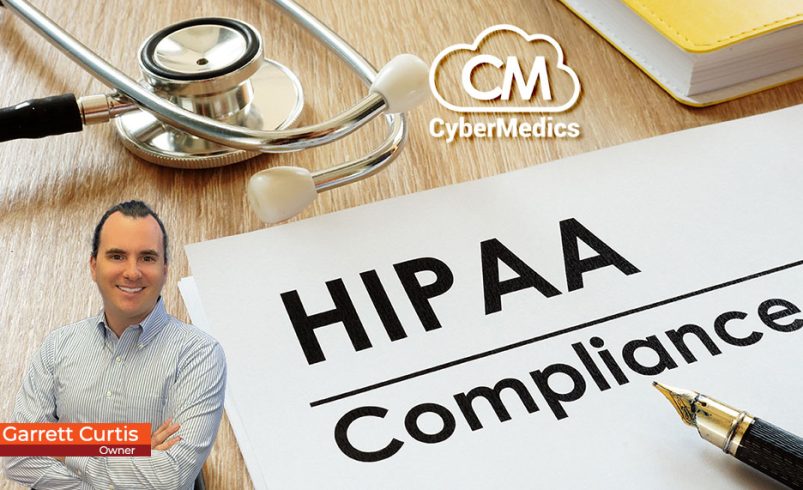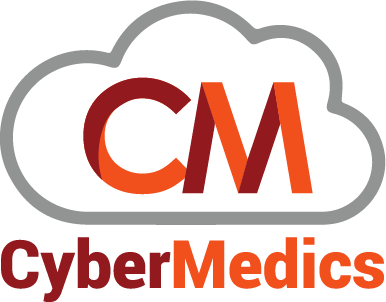
How To Update Legacy Medical Software Systems For HIPPA Compliance
Human error led to 76% of healthcare cloud breaches in 2023. This makes HIPAA compliant software development crucial for healthcare organizations today. My experience as CEO and Founder of CyberMedics has shown me how outdated medical systems create major compliance risks that go way beyond the reach and influence of basic technical issues.
The Office for Civil Rights (OCR) has handled over 358,975 HIPAA complaints since the Privacy Rule started in April 2003. They’ve launched more than 1,188 compliance reviews. OCR’s enforcement has resulted in settlements and civil money penalties across 145 cases, reaching $142,663,772. Their 22 enforcement actions in 2024 alone brought in $9.9 million. These stakes continue to rise as fines for HIPAA violations can hit a calendar-year cap of $2,067,813 for multiple violations of similar provisions.
Recent numbers paint a troubling picture. More than 540 organizations reported health data breaches to the HHS Office for Civil Rights in 2023. These breaches affected over 112 million people. Protecting patient data through detailed, secure software systems matters more than just avoiding penalties. Today’s standards demand sophisticated security features that legacy medical software often lacks. This creates vulnerabilities that can get pricey quickly.
This piece offers a practical approach to modernizing legacy medical systems with HIPAA compliance in mind. You’ll discover core requirements for modern medical software, our proven CyberProcess™ framework, and implementation steps you can follow. Let’s see how outdated systems can become secure, compliant solutions that protect your patients and organization effectively.
Why Legacy Medical Software Poses a HIPAA Risk in 2025
Legacy systems in healthcare aren’t just outdated—they’re dangerous time bombs that could explode into HIPAA violations any minute. Over the last several years leading CyberMedics, I’ve seen healthcare organizations still running software from before cybersecurity was even a priority. This creates much bigger compliance risks every day.
Outdated Access Controls and Audit Trails
The biggest problem with legacy medical software lies in its poor access control mechanisms. These outdated systems don’t have role-based access controls to enforce basic security principles. It also fails to maintain complete audit trails that show who accessed what information.
Poor access controls lead straight to security nightmares like data breaches and system compromises—all catastrophic in healthcare settings. Recent studies show insider threats jumped 15% from last year. Breaches from insiders made up 30% of all incidents in 2024.
These old systems can’t handle multi-factor authentication (MFA), which will soon become mandatory for all ePHI systems rather than just “strongly recommended”. The lack of MFA puts organizations at huge risk of unauthorized access. This becomes even more worrying since 47% of healthcare breaches in 2023 came from mobile devices—up 6% from previous years.
Unsupported Systems and Security Vulnerabilities
The most serious HIPAA risk shows up when software hits end-of-life (EOL) and manufacturers stop releasing security patches. Windows 10 will reach EOL on October 14, 2025. Healthcare organizations must upgrade before then.

Running unsupported software doesn’t automatically break HIPAA rules. All the same, using these systems without proper safety measures definitely violates the HIPAA Security Rule. The Office for Civil Rights (OCR) makes this crystal clear: “failure to update software to avoid known vulnerabilities may be a violation of the HIPAA Security Rule”.
The price tag can be huge. Anchorage Community Mental Health Services learned this lesson the hard way in 2012. They paid $150,000 in penalties after a malware attack through unpatched software. The FBI tells us 53% of networked medical devices have at least one known critical vulnerability. One Chinese-made patient monitor even had a hidden backdoor that stayed secret for 13 years.
These vulnerabilities create several compliance problems:
- Unpatched software vulnerabilities that will never be fixed
- Outdated encryption methods or complete lack of encryption
- No way to implement modern authentication requirements
- Missing audit logging capabilities for security monitoring
Incompatibility with Modern HIPAA Compliance Software
Beyond direct security issues, legacy systems create another major headache: they don’t play nice with modern compliance tools. Reports show more than 70% of healthcare providers still depend on legacy systems, which leads to more security risks and integration problems.
Modern HIPAA compliance needs systems that work with security monitoring tools, encryption systems, and incident response platforms. Legacy software often sits in isolated silos, making data flows hard to track and protect. Healthcare organizations can’t implement unified security measures across their technology stack because of this isolation.
Hardware and software lifecycles don’t match up, making everything worse. Medical device hardware might work fine for 10-30 years, but software usually lasts only 3-5 years. Organizations end up with working equipment running dangerous outdated software.
HIPAA compliant software development needs systems that support modern security features like end-to-end encryption, role-based access controls, and up-to-the-minute data analysis. Legacy systems rarely include these features, forcing organizations to either replace everything or set up complex compensating controls.
Updating legacy healthcare systems takes more than technical fixes—you need a strategic plan that puts both security and operational continuity first. Organizations should carefully check their legacy systems, put proper safety measures in place, and create a modernization plan that meets compliance rules without disrupting patient care.
Core HIPAA Compliance Requirements for Modern Software
HIPAA compliance technology requirements have changed dramatically since the Security Rule first came into effect. Technical safeguards play a vital role in protecting electronic Protected Health Information (ePHI). Healthcare organizations need to understand and implement specific software features to avoid expensive violations and data breaches.
Role-Based Access Control and Least Privilege Enforcement
Role-Based Access Control (RBAC) serves as the foundation of modern HIPAA-compliant systems. This approach protects patient data by limiting access based on specific job roles and reduces data breach risks through the principle of least privilege. RBAC directly addresses a key HIPAA Security Rule requirement – giving access only to those who need it to do their jobs.
Proper RBAC implementation needs:
- Unique user IDs for each staff member to enable individual accountability
- Role-specific permission sets that limit data access to job-specific needs
- Regular access reviews to spot potential security gaps
- Special protocols for emergency access situations
RBAC plays a vital role since human error causes 88% of cybersecurity breaches. By restricting access to sensitive information and tracking user activity, healthcare organizations can stay compliant while reducing internal risks.
Audit Logging and Real-Time Monitoring
The HIPAA Security Rule requires “hardware, software, and/or procedural mechanisms that record and examine activity in information systems that contain or use ePHI”. These logs act as your organization’s electronic paper trail.
Your audit logging system must track:
- User logins (successful and failed attempts)
- Database modifications
- New user additions and access level changes
- File access by users
- Operating system logins
- Firewall and anti-malware activity
The audit logs need to be kept for at least six years. Your systems should encrypt these logs both at rest and in transit. You’ll need strict access controls so even administrators cannot alter or delete them. Note that you must also track access to paper PHI – a requirement often missed during software modernization.
Data Encryption at Rest and in Transit
While HIPAA lists encryption as an “addressable” requirement, it’s practically essential for modern healthcare software. HIPAA requires encryption for ePHI both in storage (at rest) and when moving between systems (in transit).
Data at rest implementation should match NIST Special Publication 800-111, which suggests advanced encryption technologies like AES-256 for all storage devices. This covers servers, desktops, mobile devices, and backup media.
NIST Special Publication 800-52 provides guidelines for Transport Layer Security (TLS) implementations for data in transit. This matters especially for email communications with PHI, where both message content and attachments need encryption.
Strong encryption isn’t just a technical feature—it’s a vital safeguard that can substantially reduce breach notification requirements if an incident occurs.
Automated Breach Notification Workflows
The HIPAA Breach Notification Rule requires organizations to report security breaches within 60 days of discovery. Modern HIPAA-compliant software should have automated workflows to make this process easier.
These systems should:
- Monitor for potential breaches continuously
- Document breach circumstances automatically
- Support required notifications to authorities, affected individuals, and media (when needed)
- Keep detailed documentation for compliance purposes
Organizations without automated systems risk missing notification deadlines. This can lead to extra penalties beyond those for the breach itself. These penalties range from $100 to $50,000 per violation, with a yearly maximum of $1.5 million.
These four core requirements create a strong foundation for detailed compliance. Your modernization strategy should focus on these elements to meet today’s strict standards and protect sensitive patient information effectively.
Common HIPAA Violations in Legacy Systems and How to Fix Them
During my career in healthcare cybersecurity, I’ve seen four recurring HIPAA violations that affect legacy systems. These violations lead to heavy penalties but continue to be common. Healthcare organizations can address them easily with proper HIPAA compliant software development.
Failure to Provide Timely Access to PHI
The most common violation involves a patient’s right to access their health information. HIPAA regulations require covered entities to provide requested PHI within 30 calendar days. Many organizations using legacy systems don’t deal very well with this requirement.
A Florida hospital had to pay $85,000 because it took nine months to give a mother her child’s records. This happened even though the rules allow a one-time 30-day extension with written notice.
To fix this issue:
- Implement automated request tracking systems
- Create electronic delivery mechanisms for faster processing
- Establish clear workflows with accountability measures
- Configure alerts for approaching deadlines
The OCR wants covered entities to provide records free of charge whenever possible. This makes automated systems valuable to ensure timely compliance.
Lack of Business Associate Agreements (BAAs)
Healthcare organizations often miss the requirement for BAAs with vendors accessing PHI. These written contracts are essential under HIPAA and are the foundations of protecting patient information.
Both covered entities and business associates face direct liability without proper BAAs. Business associates can receive penalties for:
- Impermissible uses and disclosures of PHI
- Failure to provide breach notifications
- Failure to comply with Security Rule requirements
Organizations must take these steps:
- Identify all vendors accessing PHI (including software providers)
- Execute compliant BAAs before sharing any data
- Implement vendor monitoring processes
- Regularly audit vendor compliance
Some organizations require BAAs from entities that don’t need them—like landscapers. Others miss critical vendors like cloud services providers that handle ePHI.
Improper Disposal of ePHI
Legacy systems often lack proper protocols for data disposal, creating major HIPAA risks. An insurer paid $1.2 million after failing to erase PHI from photocopier hard drives before returning leased equipment.
For proper ePHI disposal:
- Implement secure data destruction policies
- Use certified data destruction services
- Ensure all storage media is properly sanitized
- Maintain disposal documentation for compliance evidence
Unsecured APIs and Interfaces
Unsecured APIs have become a common violation in HIPAA compliant software development. HIPAA regulations must cover any API that handles ePHI. Legacy systems typically lack proper API security measures.
To secure interfaces:
- Implement TLS encryption for all data transmissions
- Require strong authentication for API access
- Create detailed audit logs of all API transactions
- Apply access controls to limit data exposure
HIPAA compliance goes beyond avoiding penalties—it protects patient information through secure, modern software systems. CyberMedics helps healthcare organizations fix these common violations through our all-encompassing approach to modernization.
How CyberMedics Helps You Modernize with Confidence
Healthcare technology demands specialized expertise, and our team at CyberMedics delivers exactly that. Healthcare organizations need experienced professionals who understand both technology and compliance as regulations grow stricter.
Custom HIPAA-Compliant Software Development
CyberMedics creates tailored solutions that meet your specific operational needs while following strict HIPAA standards. Business Associate Agreements formalize our shared responsibility for compliance. Your systems stay protected through secure architectures our U.S.-based team designs using cloud services like AWS or Heroku.
Legacy System Integration and Data Migration
Our customized middleware solutions connect older medical systems with modern platforms. The ETL (Extract, Transform, Load) process securely moves data between systems and maintains compliance throughout. Patient care continues smoothly with our phased implementation approach.
Ongoing Compliance Audits and Lifecycle Support
HIPAA compliance needs regular assessment. Our automated security monitoring spots threats before they become violations. This watchfulness cuts manual effort by up to 70% and ensures regulatory standards are met consistently.
Consultation and Risk Assessment Services
Our team of experts provide a full picture of vulnerabilities across your technology ecosystem. Your breach response capabilities become stronger with our help and we also coordinate communications with OCR during investigations.
Contact CyberMedics today to begin your journey toward HIPAA compliant software development that’s secure, auditable, and ready for your future needs.
Conclusion
Healthcare organizations face tough decisions at the time they deal with legacy medical systems. This guide explores how outdated software creates HIPAA compliance risks. These risks include poor access controls, unpatched systems with security holes, and tools that don’t work well with modern compliance solutions.
Non-compliance can lead to million-dollar fines and damaged reputations. Patient data security takes the biggest hit. Making systems modern isn’t just an IT project – we need it for business survival.
HIPAA compliant software needs specific technical safeguards. A reliable system starts with role-based access controls, complete audit logs, strong encryption, and automated breach alerts. These parts create a secure space that keeps patient information safe and lets healthcare providers work better.
Modernizing legacy medical systems isn’t just an IT project—it’s a compliance strategy. As healthcare regulations evolve, your software must do more than function—it must protect. HIPAA violations are no longer rare events; they’re common outcomes of outdated systems left unchecked.
At CyberMedics, we specialize in HIPAA compliant software development that not only meets federal standards but transforms how healthcare organizations operate. From access controls and encrypted audit trails to secure data migration and compliance audits, we provide end-to-end solutions that keep your systems secure and audit-ready.
If your legacy software is holding you back—or putting you at risk—don’t wait for a violation to force your hand. Contact CyberMedics today!
